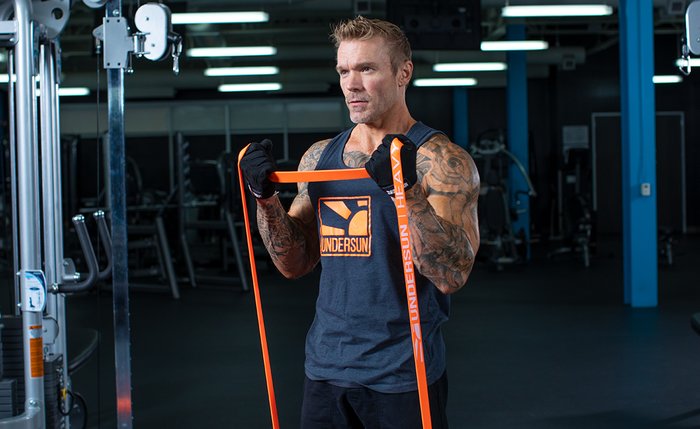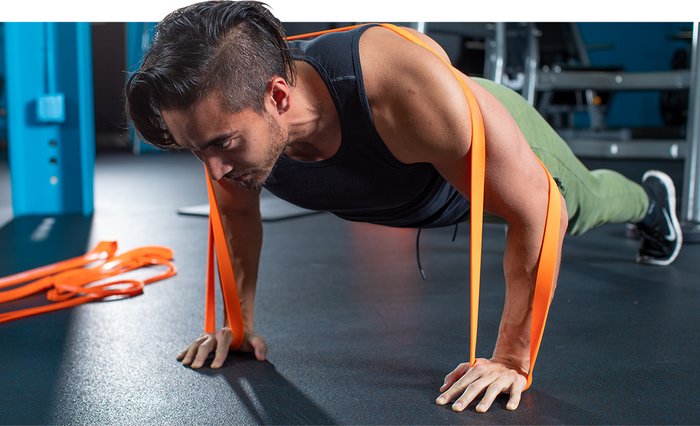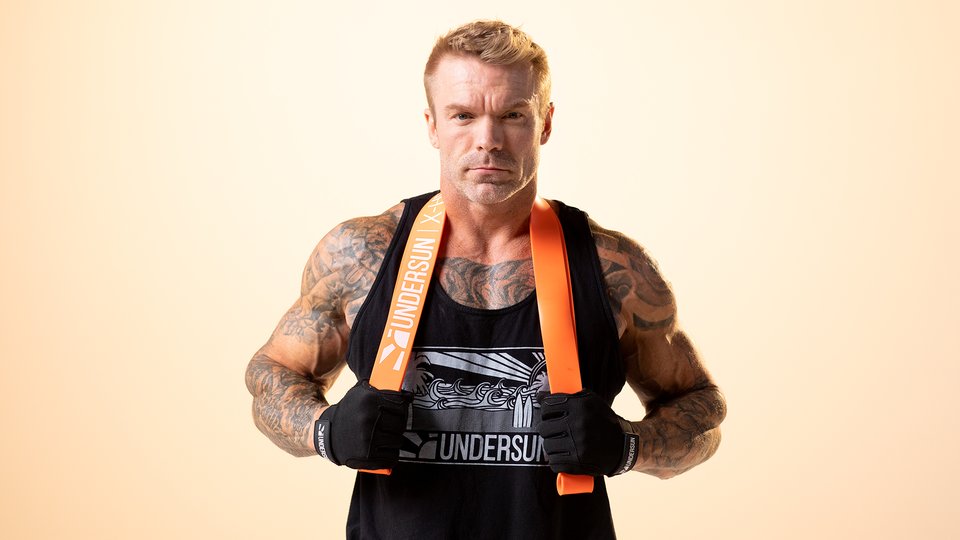Products You May Like
If you’ve always thought resistance bands had more to do with stretching and rehab than actual training, prepare to have your mind changed. Undersun founder and fitness expert James Grage has been building his impressive physique with bands for years, and he’s here to explain why using bands will not only help your workout, but improve it.
Here are five things you need to know about resistance bands to make radical improvements in your training.
1. Bands Help Build the Mind-Muscle Connection
By now you’ve probably heard of the mind-muscle connection and how it can benefit your workout and improve your gains. What you may not know is that the dynamic resistance of bands can make it easier to establish that connection.
As Grage explains, “When you no longer have to focus on how much something weighs, you can focus on good, disciplined form and peak contraction.”
The increasing resistance of a band forces you to focus at the end of the range of motion and make sure you get a good squeeze on each rep, which ultimately will help you build your mind-muscle connection. To get the most out of this technique, do your band work first in your workout to establish the mind-muscle connection early and maximize every exercise.
2. Bands Keep Constant Tension on the Target Muscle
One of the well-known benefits of bands is dynamic tension, yet many experienced lifters forget that, unlike free weights, bands also provide constant tension. Grage uses the example of a biceps curl to illustrate this point.
“Doing a biceps curl, we lose tension at the very top because we’re locked out,” he explains. “With resistance bands, as we stretch that band, we have tension all the way through the range of motion, especially at the top.”

Since bands do not rely on gravity for resistance the way weights do, they can provide constant tension in any direction. That makes bands particularly useful for at-home workouts, especially for hard-to-work muscle groups such as the back, hamstrings, and rear delts.
3. Bands Are Not Just for Warm-Ups
Bands are a common sight in warm-up and cool-down areas in many big box gyms, but if that’s the only time you use them, you’re not tapping your full workout potential. The constant, dynamic resistance of bands is challenging but accessible, making them adaptable to virtually any fitness level and any fitness goal. You can apply them to a variety of exercises, modalities, and training goals. You can use them to assist with difficult bodyweight movements such as pull-ups or dips and to add intensity to other foundational movements such as squats and lunges.
Grage loves their versatility and enjoys dispelling the myth that bands have limited use.
“Bands are not just for warm-ups,” he says. “You can do any style of training with resistance bands that you can do with free weights or machines. You can build muscle, you can do HIIT, you can do total-body workouts—anything that you want to do, you can do with resistance bands.”
4. Bands Build Muscle
Resistance bands can build actual muscle. Yes, it’s true. That’s because the tension the bands place on the muscle fibers can cause the same microtears required to stimulate muscle growth that lifting weights causes.
“There’s this misconception that resistance bands don’t provide enough resistance to build muscle,” explains Grage. “But this is simply not true. Resistance is resistance.”
While bands may not seem like much, in reality, they can add as much as 150 pounds of extra resistance, which is nothing to scoff at when added to bodyweight exercises such as push-ups and lunges.

5. Bands Combine with Free Weights for a Killer Workout
Grage’s final point about resistance bands is that you can combine them with free weights and get the best of both worlds. Let’s say you’re interested in putting up higher numbers on your bench and squat. Using bands adds more resistance right at that point in the exercise when you are the strongest, matching the strength curve to make the movement more challenging throughout the range of motion. This will help you work through strength plateaus and put up bigger PRs.
Bands can also help when your implement options are limited. Those 10-pound dumbbells can easily become 30- or 40-pounders with the simple addition of a band, and a 45-pound barbell reaches triple-digit resistance just as easily—no plates or racks required.
Ready to make bands part of your training routine? Make sure you pick up a set of Undersun resistance bands right here on Bodybuilding.com.
